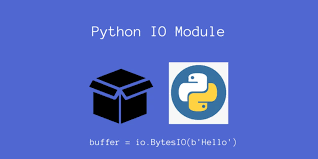When you’re working with binary data in Python—whether that’s image bytes, network payloads, or any in-memory binary stream—you often need a file-like interface without touching the disk. That’s where BytesIO from the built-in io module comes in handy. It lets you treat a bytes buffer as if it were a file.
What Is BytesIO?
- Module:
io - Class:
BytesIO - Purpose:
- Provides an in-memory binary stream.
- Acts like a file opened in binary mode (
'rb'/'wb'), but data lives in RAM rather than on disk.
from io import BytesIO
Why Use BytesIO?
- Speed
- No disk I/O—reads and writes happen in memory.
- Convenience
- Emulates file methods (
read(),write(),seek(), etc.). - Ideal for testing code that expects a file-like object.
- Emulates file methods (
- Safety
- No temporary files cluttering up your filesystem.
- Integration
- Libraries that accept file-like objects (e.g., PIL,
requests) will work withBytesIO.
- Libraries that accept file-like objects (e.g., PIL,
Basic Examples
1. Writing Bytes to a Buffer
from io import BytesIO
# Create a BytesIO buffer
buffer = BytesIO()
# Write some binary data
buffer.write(b'Hello, \xF0\x9F\x98\x8A') # includes a smiley emoji in UTF-8
# Retrieve the entire contents
data = buffer.getvalue()
print(data) # b'Hello, \xf0\x9f\x98\x8a'
print(data.decode('utf-8')) # Hello, 😊
# Always close when done
buffer.close()
2. Reading Bytes from a Buffer
from io import BytesIO
# Initialize with existing bytes
initial_bytes = b'\x00\x01\x02hello'
buffer = BytesIO(initial_bytes)
# Read the first 3 bytes
first_three = buffer.read(3)
print(first_three) # b'\x00\x01\x02'
# Read the rest
rest = buffer.read()
print(rest) # b'hello'
buffer.close()
3. Using BytesIO as a Context Manager
from io import BytesIO
with BytesIO() as buf:
buf.write(b'Data inside context manager')
buf.seek(0)
print(buf.read()) # b'Data inside context manager'
# buf is automatically closed here
Common Use Cases
- Image Processing: Pass
BytesIOto PIL/Pillow’sImage.open()when you download images over HTTP. - HTTP Requests: Send or receive binary payloads via
requestswithout saving to disk. - Testing: Simulate files in unit tests.
- Data Serialization: Temporarily hold pickled objects, ZIP archives, or other binary formats.
Best-Use Tips
getvalue()vs.read():- Use
getvalue()to grab all the data without changing the stream position. - Use
read()to consume data sequentially.
- Use
- Reset Position with
seek():
buf.seek(0) # rewind to the start
- Avoid Memory Leaks:
- Close your
BytesIOobjects when done, or usewithto auto-close.
- Close your
- Know Your Modes:
- Unlike disk files, there’s no mode argument. All I/O is binary.
- Large Data Warning:
- Storing huge data in memory can exhaust RAM. For very large streams, consider temporary files or chunked processing.
Copy-and-Paste-Ready Snippet
from io import BytesIO
# 1. Writing to an in-memory buffer
buffer = BytesIO()
buffer.write(b'Example binary data')
all_data = buffer.getvalue()
print(all_data)
# 2. Reading from a buffer initialized with bytes
buffer = BytesIO(b'Initial bytes here')
print(buffer.read())
# 3. Using BytesIO in a context manager
with BytesIO() as buf:
buf.write(b'Context-managed buffer')
buf.seek(0)
print(buf.read())





